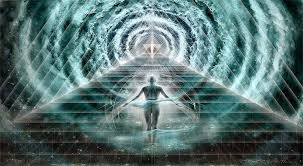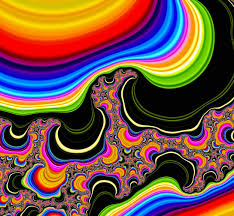
On the path from being completely unknown to being properly understood and all of its implications also understood, knowledge can be seen to pass through four stages, each relating to one of the major alchemical elements of clay, iron, silver or gold. This is true whether we are talking of an individual learning a discrete piece of knowledge or of the entire human species collectively intuiting something.
In the clay phase, little attention is paid to the knowledge. Possibly the knowledge is so poorly understood that it will only be voiced by madmen, and so it is easily ignored or written off as meaningless.
It may also be that the knowledge is hard to come by because the methodology for detecting or replicating it is poorly understood or non-existent, or that it is not appreciated because the people who encounter it are simply too dull to possess the capacity.
During this phase it’s possible that a mediocre mind stumbles upon this knowledge and does not recognise it for its value, perhaps even throwing it away as the wheat with the chaff. It might take a superior mind, one of silver most probably, to recognise the import of this knowledge.
When such a superior mind does come to appreciate the value of this knowledge, and to bring it to the attention of their fellows, then it transmutes from clay to iron.
In the iron phase, the power of the knowledge is appreciated, but not its value or how to use it. It is, however, understood that the knowledge is dangerous, or at the very least has the potential to be disruptive to the established order.
In this phase it is rejected with prejudice, often by making it illegal to promulgate it or any methodology associated with it. This might result in book burnings, or in persecution of anyone who dares to voice what the ruling authorities have deemed to be an excessive subversive opinion, or in making activities associated with it illegal.
This reflects how books and writing were initially repressed by many cultures when these cultures first became aware of them, and especially by Abrahamism in the West, which made a special effort to destroy all knowledge that was not conducive to the thought control system introduced by the priesthood.
The grim nadir of this mindless process may have been the burning at the stake of Giordano Bruno, a Renaissance genius from Italy, who was murdered principally for his belief in pandeism and his allegiance to the Luciferian ideal of fearlessness before death and before the Gods.
If the knowledge is worked enough, which is to say if the heat of illumination is applied to it by means of conscious attention, it might become brilliant, which is to say that it transmutes from iron to silver. This requires that the knowledge be discussed despite the persecution of it – usually in secret.
In the silver phase, knowledge is rejected with thought. In this phase, the knowledge might be debated in the open, but only the wise will debate it correctly; the others will have an agenda. The masses will try to do to this knowledge with silver what was previously done with iron and clay: drive it underground to be forgotten.
Inevitably, knowledge in this silver phase is lied about instead of being countered with violence. Telling lies is, after all, often more efficient than violence because once a person has been successfully lied to they will often promulgate the lie on their own initiative (achieving this effect is the goal of propaganda).
In the same way that silver tarnishes to black, so too is knowledge subjected to dark arts during the phase of silver. There might be concerted efforts to oppose this piece of knowledge through all means of disinformation or misinformation. Propaganda against that knowledge might be widely disseminated with eager help from a variety of media.
If the piece of knowledge survives this phase, the phase of the lunar caustic or perhaps the Dark Night of the Soul, then it will become radiant, and will therefore have transmuted from silver to gold.
In the gold phase, the knowledge in question achieves the state of illumination. This means that the knowledge is fully understood, and so are all of its implications.
This corresponds to the radiance of the light that shines from reflected gold. A piece of knowledge that has achieved the status of gold will radiate its heat through the body and mind of the person possessing it, warming the spirit.
All knowledge passes through these four stages from when it is first dimly perceived to when it is totally personified in all of the body, mind and spirit.



